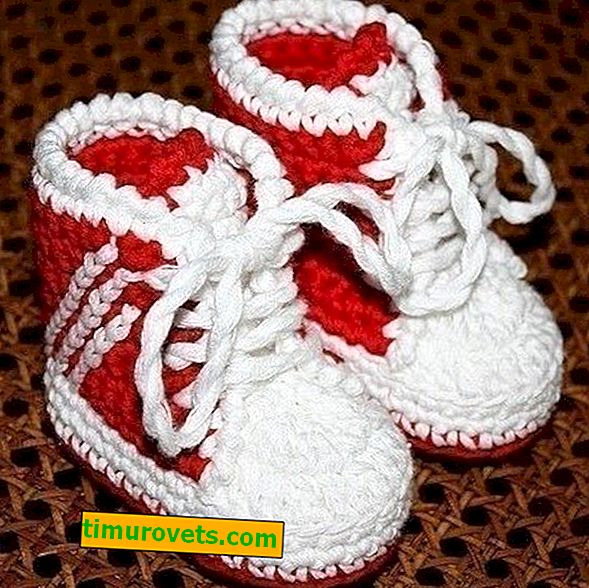Festive clothing in Russia has always been distinguished by bright colors and intricate decorations. For the wedding we sewed the most beautiful outfits. The bride on this crucial day in her life changed two suits, and the groom walked to the altar in a shirt embroidered by his future wife. Moscow province is the richest in the country. What the bride’s wedding outfit consisted of and what the groom put on for the celebration, read more about this.
Features of a wedding suit of the old Moscow region
Women's Russian wedding outfit consisted of a shirt, sundress, soul-dress, and a men's wedding outfit consisted of a shirt and ports. Costumes for every day and for the holiday consisted of the same elements. Wedding clothes differed from them in decoration: it was richly embroidered with ornaments depicting leaves, flowers, berries, birds . The outfits were very bright colors, the combination of a red shirt and a red or blue sundress was frequent, and the presence of yellow, gold, white, blue blotches in the elements of clothes or a headdress, in breast ornaments made the newlyweds especially solemn.
Elements of women's costume

A shirt was worn on the shirt, fastened around the waist with a cord - an ancient prototype of the skirt. The sundress that came to replace it existed in two forms: a kosklinny sayan, oar or sewn in front, and a straight cut with straps, which in the Moscow province was called round, and outside Moscow. It was sewn from Chinese fabric - a dense cotton or silk material brought by merchants from the East. In the color scheme - black, blue, and more often - red. A murderer was worn over a shirt and sarafan, in some counties they preferred quilted jackets or a fur coat.
In the offseason, they wore outer clothing - a cloth army, in winter - a sheepskin short fur coat. Depending on the well-being of the bride’s parents, he was covered with cloth or remained uncovered, and prosperous peasants, merchants, and townspeople could afford to buy for their daughter a rabbit fur coat covered with expensive Chinese material.
Important! Toward the end of the 19th and beginning of the 20th centuries, the Russian wedding dress began to supplant chintz dresses and pair suits among Russian peoples in cities, factory towns and large villages: a long skirt and a blouse with a peplum.
Brides adorned themselves with pearl and glass beads, which were hung in several rows, worn monisto, added images and crosses to it. A mandatory element of the wedding attire was large pearl or turquoise pendant earrings and a braid, which was attached to the braid at the very bottom. The outfits were embroidered with branded weaving, multi-colored or silver braid with patterns and ornaments, embroidered with colored and gold threads. Tin buttons also served as decoration.
Groom costume details
The men walked to the altar in a straight shirt, outright, knee-length belted in a woven sash. The hem, sleeves and collar were decorated with embroidery or braid with ornament. The shirt was complemented by dark blue and pinstriped ports - homework cloth pants. The groom’s suit was complemented by a black caftan caftan or a sheepskin coat, covered with black or white caftan for less wear on top.
Shoes and hats in a wedding look

The bride’s headdress consisted of a kokoshnik with a long thin veil - a veil. This is one of the most important and significant parts of the outfit . Kokoshnik was embroidered with stones, pearls, beads, glass beads, cantle. The veil was a rectangular section of a thin purchased fabric, silk or calico, with gold or multi-colored embroidery, which covered the bride's head over the kokoshnik. Wealthy families could buy a veil for the daughter, a dear and fabulously beautiful thing, and the poorest peasantry as a veil was satisfied with the purchase of holiday pay.
On a festive summer day, the guy put on a round hat with a ribbon wrapped around the body - a sinner or a cap, and in winter he covered his head with a warm sheepskin hat. Both the hat and the cap, besides a multi-colored ribbon, were decorated with a flower or a modest bouquet on the side.
Interesting facts about vintage wedding costumes in the Moscow province

Immediately after the wedding, the girl’s braid was braided by her friends and braided in two, laying them around her head. The kosnick was removed from the hair, now the need for it fell away. Kokoshnik changed to another, which covered his whole head completely, a veil was attached to him.








